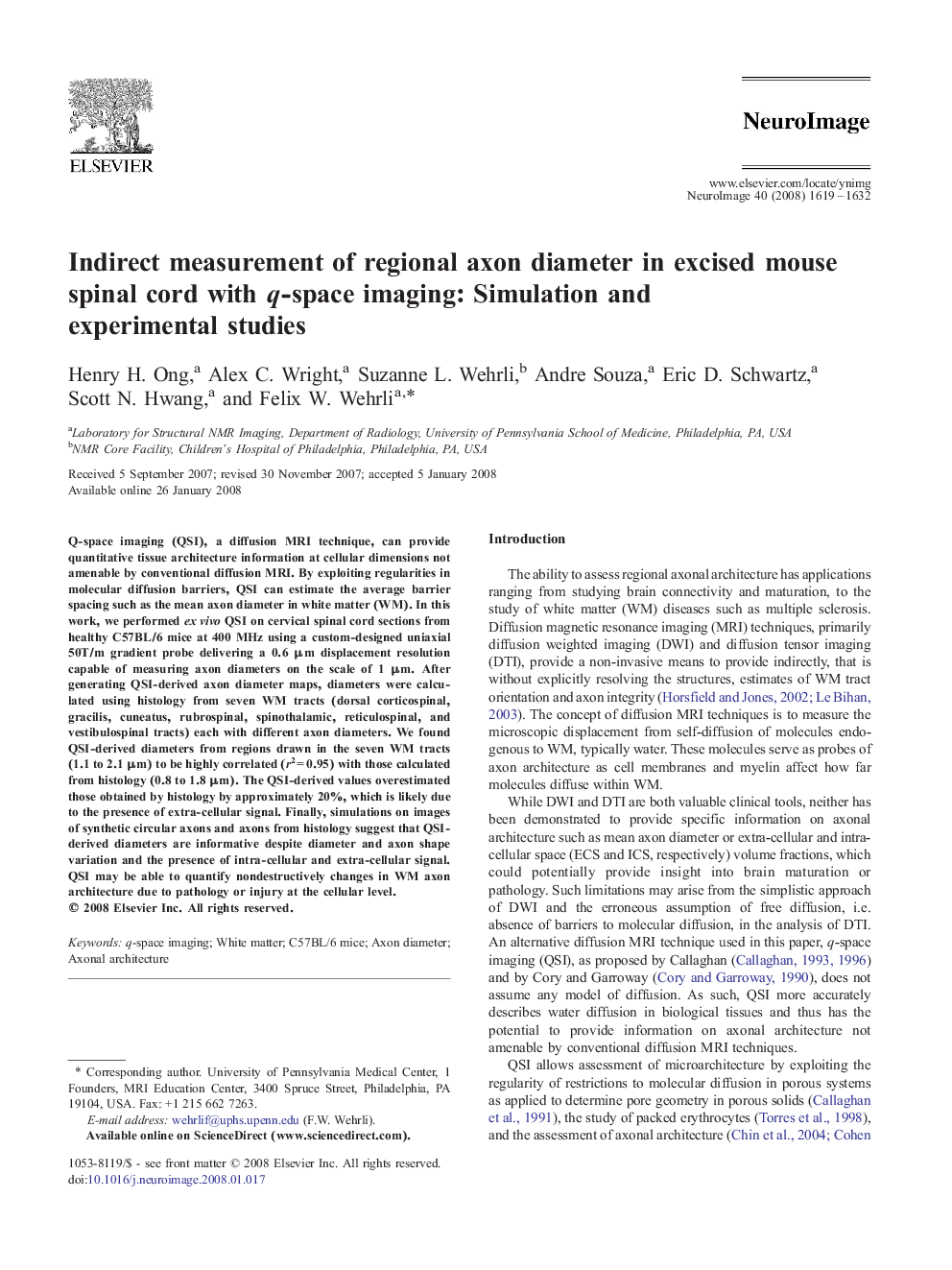| Article ID | Journal | Published Year | Pages | File Type |
|---|---|---|---|---|
| 6039542 | NeuroImage | 2008 | 14 Pages |
Abstract
Q-space imaging (QSI), a diffusion MRI technique, can provide quantitative tissue architecture information at cellular dimensions not amenable by conventional diffusion MRI. By exploiting regularities in molecular diffusion barriers, QSI can estimate the average barrier spacing such as the mean axon diameter in white matter (WM). In this work, we performed ex vivo QSI on cervical spinal cord sections from healthy C57BL/6 mice at 400 MHz using a custom-designed uniaxial 50T/m gradient probe delivering a 0.6 μm displacement resolution capable of measuring axon diameters on the scale of 1 μm. After generating QSI-derived axon diameter maps, diameters were calculated using histology from seven WM tracts (dorsal corticospinal, gracilis, cuneatus, rubrospinal, spinothalamic, reticulospinal, and vestibulospinal tracts) each with different axon diameters. We found QSI-derived diameters from regions drawn in the seven WM tracts (1.1 to 2.1 μm) to be highly correlated (r2 = 0.95) with those calculated from histology (0.8 to 1.8 μm). The QSI-derived values overestimated those obtained by histology by approximately 20%, which is likely due to the presence of extra-cellular signal. Finally, simulations on images of synthetic circular axons and axons from histology suggest that QSI-derived diameters are informative despite diameter and axon shape variation and the presence of intra-cellular and extra-cellular signal. QSI may be able to quantify nondestructively changes in WM axon architecture due to pathology or injury at the cellular level.
Related Topics
Life Sciences
Neuroscience
Cognitive Neuroscience
Authors
Henry H. Ong, Alex C. Wright, Suzanne L. Wehrli, Andre Souza, Eric D. Schwartz, Scott N. Hwang, Felix W. Wehrli,
